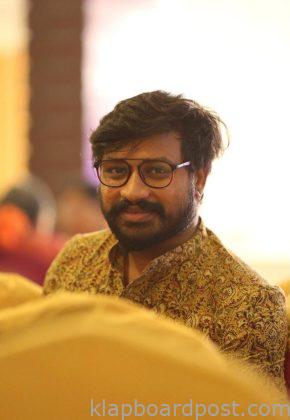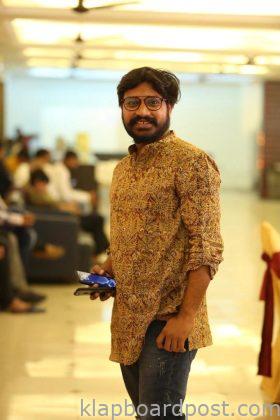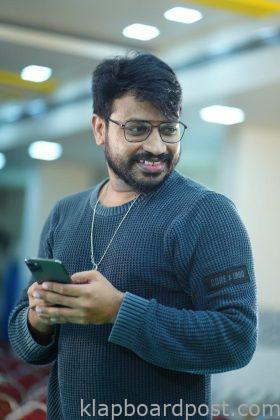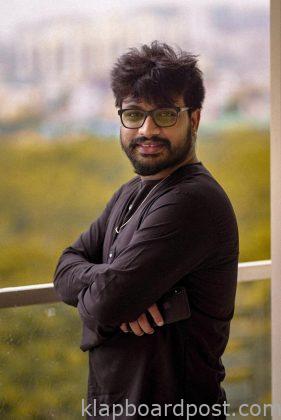Twenty nine year old Anwar is from Guntur. In 2012 after intermediate he shifted to Hyderabad as he was fascinated by editing and wanted to pursue a career connected with it. In a chat with Y.Sunita Chowdhary of Klapboardpost.com, Anwar talks about her career, his approach to editing, and something about his up and coming films Kinnerasani and Chor Bazaar. How did he actually begin editing? “During childhood I would watch marriage videos and thought that it didn’t have the right sound and editing. My well wisher in Hyderabad who was a cashier to a star took me to an edit room and after that I resolved to become an editor. When I did marriage videos, my friends said I would soon become an editor in the movies. I learnt the job and secured a job as a video editor in Sakshi. I discovered that there was no life, not much of a creative aspect there except posting a video. It was a dry job. I was idle for a few months but it didn’t matter. After waiting for a few months in Hyderabad, I secured a job in Supergood films in 2012, it was the time the negative didn’t come to an end. The last film where negative was used was Jeevan Reddy’s Dalam and I consider myself lucky enough to see the transition period from negative to digital.”
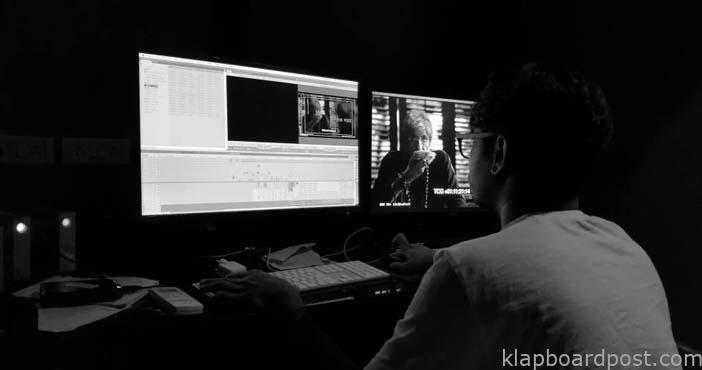
Editing is not a specific process. Mostly, Anwar would be in the room watching these incredible editors and directors at work. He absorbed it all – the creative work of cutting together material, the workflow, technical demands etc and was around when editors and directors worked together. This allowed him to see how they find performance or establish pacing and storytelling, how they work together. We ask him about the edit pattern then, he says “We are sitting at the table and we just undo, we work on multiple ideas. Then if one part is supposed to get cut, seniors would take a decision and cut from the negative. To undo, we join it and then cut it. Lot of people at that time would come from Chennai. Even if there is an editor, there would be four people working for him on negative cutting. They would see which image is best, who is best, if the acting is good etc. In old films, comedy scenes would go in wide. Now there is an image and there would be laughter which means it is a hit. The edit pattern has changed and we have multiple options. Nowadays people are copying Manairatnam’s sign of editing; they achieved a lot in that time. We always think that we can see it and fix it in the edit room. Even without a purpose we take extra cuts these days with extra cameras. At that time, the first AD would move from one editing room to the other with boxes but now everything is being done online. Also those days we were under the impression that only a big banner could do a film, because of the negatives. We hardly noticed any new producers.”
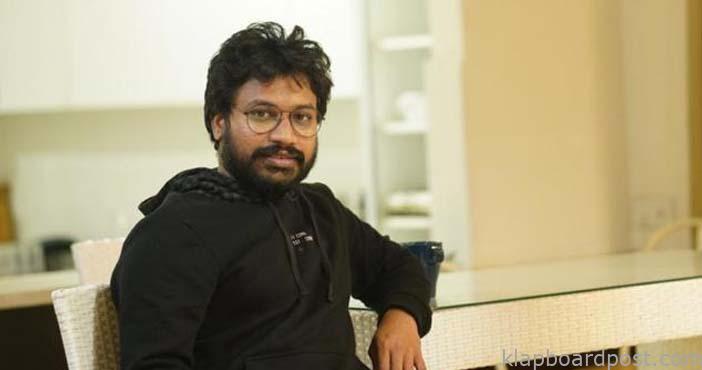
The editors always want to make the best movie or show he can. But sometimes he has to experiment, make a choice, and go for it. When you work with veteran editors and directors, you notice that they sometimes don’t even verbalize things. They just keep going until they find what works best. Anwar says, “Those days decisions were perfect, now there are multiple versions…from the hero, producer, director etc. I learnt a lot from Nandamuri Hari who did many films of the Super Good banner. I worked on Manchivadu which came from Super Good. I was in observation when Bheemli Kabadi Jattu was being made. After one year I worked in Poru Telangana on the recommendation of Narayana Murthy.” How does an editor establish a brand for himself and upgrade? “First of all an editor to get a brand of his own has to travel with the story. If you spend as much time as you can, you can be a perfect editor and apply that knowledge of your previous films on the next. You learn if the length is more, to which character is the audience getting connected to etc. If you watch a film repeatedly either it turns mechanical or you begin loving the character, BGM, location. Take a gap and we can watch it with a fresh perspective. I prefer story narrations, I don’t like reading scripts. I listen to the story and visualise and at the editing table, I edit what I understood from the narration. I then get the scene paper which is in order and yes, I could get a better version than what the director told me. The scene paper in Kinnerasani was helpful, I gave a gap of ten days and returned with a fresh perspective,” he shares.
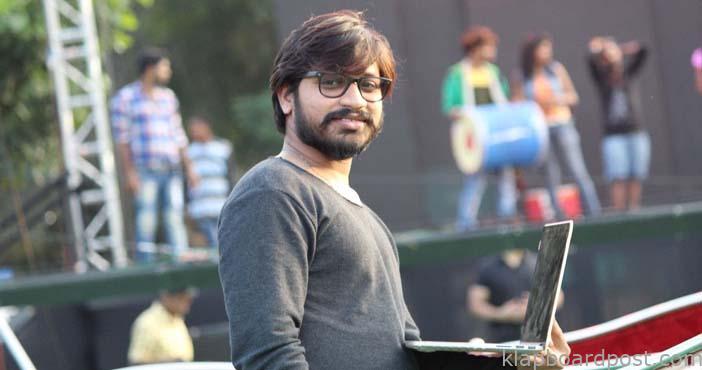
On the directors and films he worked on, Anwar elaborates. “The producers mostly tell us the film shouldn’t cross a certain duration and inist on retaining comedies. No one does bad editing purposely and corrections for the sake of it are bad. I worked with rgv 2013 to 2018…his spot decisions are next level. If we have already dispatched the first copy, RGV still suggests changes because it is digital. The last show is what we show to censor and make appropriate changes before release which is usually about length. I saw Marthand Venkatesh’s interview and I follow him a lot. He was mentioning about the single take climax in Bommarillu..wherfein he insisted on close ups of Jayasudha and Prakash Raj. This is true, emotions are elevated because of cuts. Singling lengthy dialogues instills boredom.” Ask Anwar if business speedens up because of a teaser or a trailer release. He quips, “Definitely. It reaches the youth. Some are intelligent and also the hype that the teaser gets is sometimes absent in the trailer. So they stop digital promos with the teaser. Teasers are catchy and energetic and the trailer is for business, you need to hint at the story, show the artists etc. Kinnerasani teaser was good, there was no necessity of a trailer but we did it for namesake. Kabali teaser was a hit but since the trailer wasn’t so catchy they didn’t release it. Also if the footage is big and we want to show all of it, the audience won’t receive it even if it is good. Trimming is a challenging task. Krishna Vamsi once said adhi metre lo set avvakapothey delete cheyali even if there is chiranjeevi in it. Decisions like this are challenging. In Bheema Nayak, there is a song by Chitra which was removed (in the second half). We might have spent a lot of money on it, but a film has a pace and we need to follow the grammar. How we narrate also makes the difference. There are heated discussions between director and editor but eventually the editor makes sure he doesn’t hurt the director and also does what he is supposed to. I had to chop four minutes from Kinnerasani”.
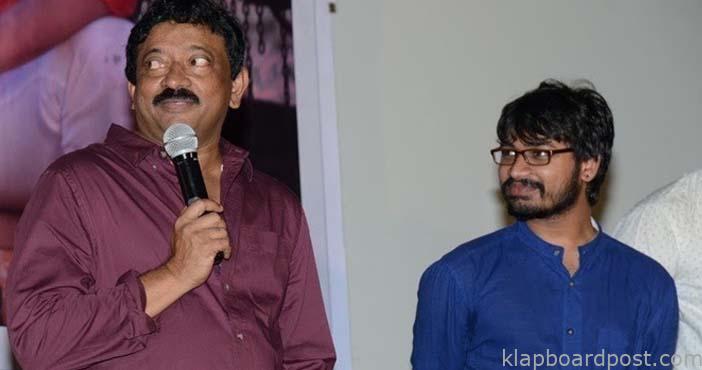
Anwar has worked on 15 films independently, mostly with RGV viz., Killing Veerappan and Veerappan in Hindi, Johar, Sarkar 3. He states that if a film is a hit, an editor flourishes for many years and for upgrading to happen, he needs to pick good stories. The selection decides his future. Everytime you work on commercial films, you just stay there…we need to work on different genres but only if a film becomes a financial hit, then it is considered a real success.

